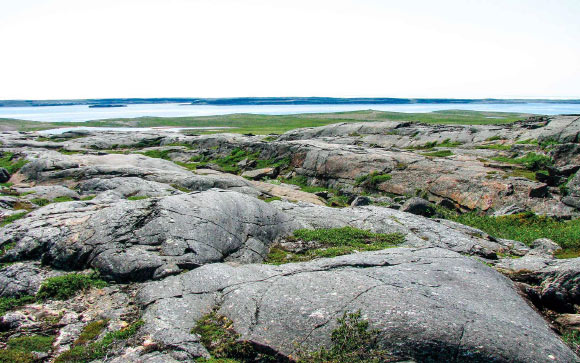
Canada’s Nuvvuagittuq Greenstone Belt Harbors Fragments of Earth’s Oldest Crust, Study Shows
How did your country report this? Share your view in the comments.
Diverging Reports Breakdown
Canada’s Nuvvuagittuq Greenstone Belt Harbors Fragments of Earth’s Oldest Crust, Study Shows
Geologists have discovered evidence for preservation of Hadean rocks in the Nuvvuagittuq Greenstone Belt. The rocks are 4.16 billion years old, opening a rare window into Earth’s earliest times. The findings were published in the journal Science. The researchers focused on a specific type of ancient rocks — metagabbroic intrusions — within the belt. These intrusions intersect older basaltic rocks, and this feature allowed the authors to use combined uranium-lead (U-Pb) dating with both short- and long-lived samarium-neodymium (Sm-Nd) isotopic analyses.
Much about Earth’s earliest geologic history remains poorly understood due to the rarity of Hadean-age (over 4.03 billion years old) rocks and minerals.
These ancient materials are typically altered or destroyed as the planet’s crust is recycled through ongoing tectonic processes.
“One candidate for surviving Hadean-age crustal rock is the Nuvvuagittuq Greenstone Belt,” said lead author Dr. Christian Sole from the University of Ottawa and colleagues.
“However, this claim is controversial; some argue that the isotopic data underpinning these estimates may instead reflect later geological mixing processes rather than the true age of the formation.”
“If shown to be Hadean in origin, the Nuvvuagittuq Greenstone Belt would represent the oldest preserved rock sequence on Earth.”
“It would offer critical insights into early Earth geology, including the potential setting for the emergence of life.”
To constrain the age of the Nuvvuagittuq Greenstone Belt, the researchers focused on a specific type of ancient rocks — metagabbroic intrusions — within the belt.
These intrusions intersect older basaltic rocks, and this feature allowed the authors to use combined uranium-lead (U-Pb) dating with both short- and long-lived samarium-neodymium (Sm-Nd) isotopic analyses to determine a lower age limit on the more ancient formations (older basaltic rocks).
The Sm-Nd data yielded consistent isochron ages around 4.16 billion years, regardless of sample location or mineral composition.
The fact that both isotopic systems yield the same age in rocks linked by clear evidence of magmatic differentiation strongly supports their Hadean-age crystallization.
This, in turn, supports the idea that fragments of mafic crust from the Hadean Eon have survived in the Nuvvuagittuq Greenstone Belt.
“Understanding these rocks is going back to the very origins of our planet,” said Dr. Jonathan O’Neil, a researcher at the University of Ottawa.
“This allows us to better understand how the first continents were formed and to reconstruct the environment from which life could have emerged.”
The findings were published in the journal Science.
_____
C. Sole et al. 2025. Evidence for Hadean mafic intrusions in the Nuvvuagittuq Greenstone Belt, Canada. Science 388 (6754): 1431-1435; doi: 10.1126/science.ads8461
Source: https://www.sci.news/geology/hadean-nuvvuagittuq-greenstone-belt-14023.html
